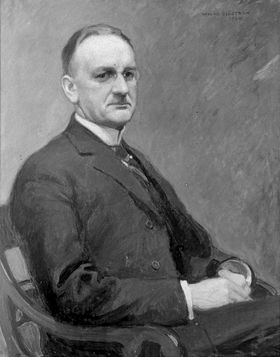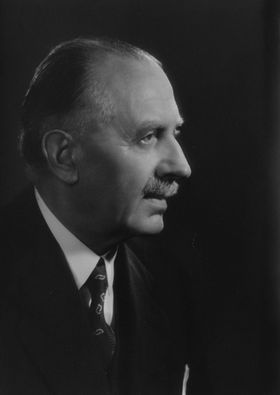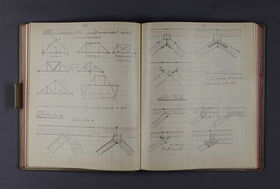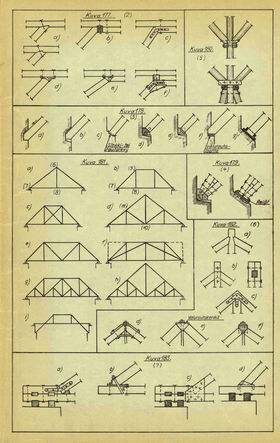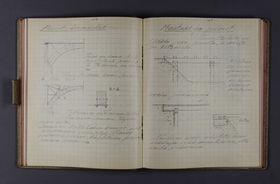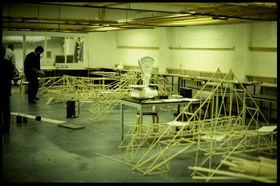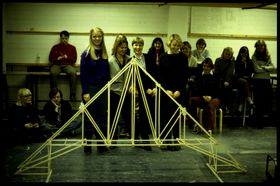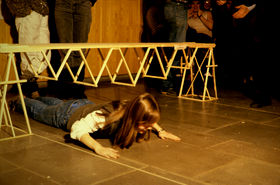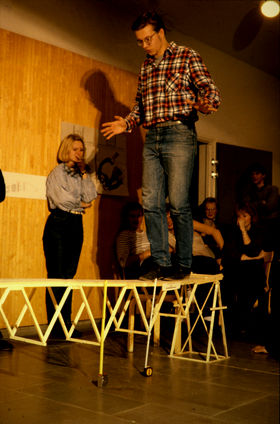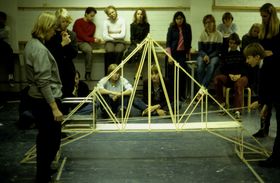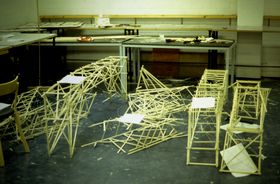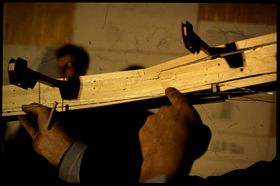History of the teaching of bridge building
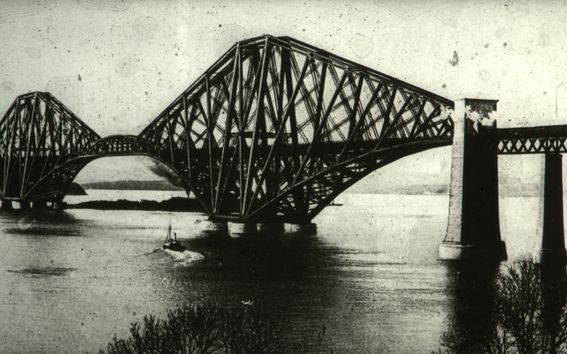
Throughout history, bridges have been an important part of infrastructure, and advances in technology have enabled the development of many different types of bridges. Different bridge construction materials have also enabled the construction of longer and more rigid bridges. The Aalto University archives contain several photographs of bridge construction and their use for educational purposes. There is no centralized collection of bridge material in the archive, but a considerable amount of material can be found by searching in different places.
The early days of the engineering studies in Finland
Until the late 1850s, wood was the most common material for building bridges in Finland because it was abundant and cheap. A major change came with the development of railways in the late 19th century, as heavier loads forced the construction of more durable railway bridges. The construction of railways became a national project and, as wood quickly proved unsuitable for railway bridges, the construction of bridges had to be promoted and new types of bridges developed.
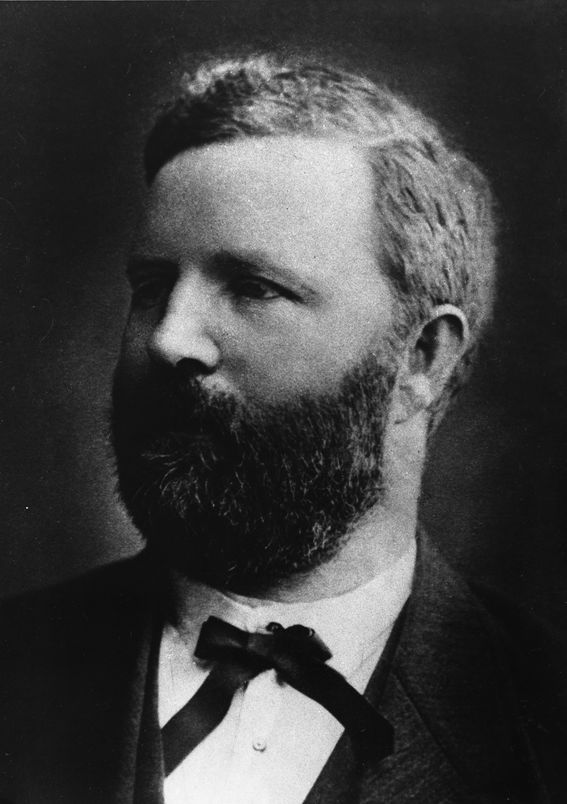
Early teachers of bridge building
The teaching of bridge building was an early part of the engineering curriculum. The Norwegian Endre Lekve was already a teacher of civil engineering at the Technical School of Helsinki and Polytechnic School between 1861 and 1882, and his courses included bridge building. In the 3rd and 4th years of the four-year degree, students were taught civil engineering (bridge, road, railway, and hydraulic engineering) for a total of 30 hours a week. Lekve was therefore not the first teacher to focus solely on bridge building, but he was involved in developing the teaching of engineering and his lecturing style was considered inspiring and engaging. Lekve was responsible for all engineering teaching between 1861 and 1879 and has been called the father of Finnish civil engineering. While Lekve was teaching civil engineering, general engineering, along with suspension bridges, was the focus of his teaching.
The teaching of bridge building during Lekve's time was largely focused on wooden bridges, but other building materials were gradually used, such as the iron chain suspension bridge completed in 1877 in Kiviniemi. This bridge was designed by Lekve and was the first of its kind in Finland. The benefits of iron in bridge building were soon recognized and there was no need to switch to wood as, in addition to the weaker structures, wooden bridges were expensive to maintain. The foundations of the Kiviniemi bridge were made of concrete, which also makes it one of the earliest examples of the use of concrete as a supporting structure in Finland. Lekve's personal archive can be found in the Aalto University archives.
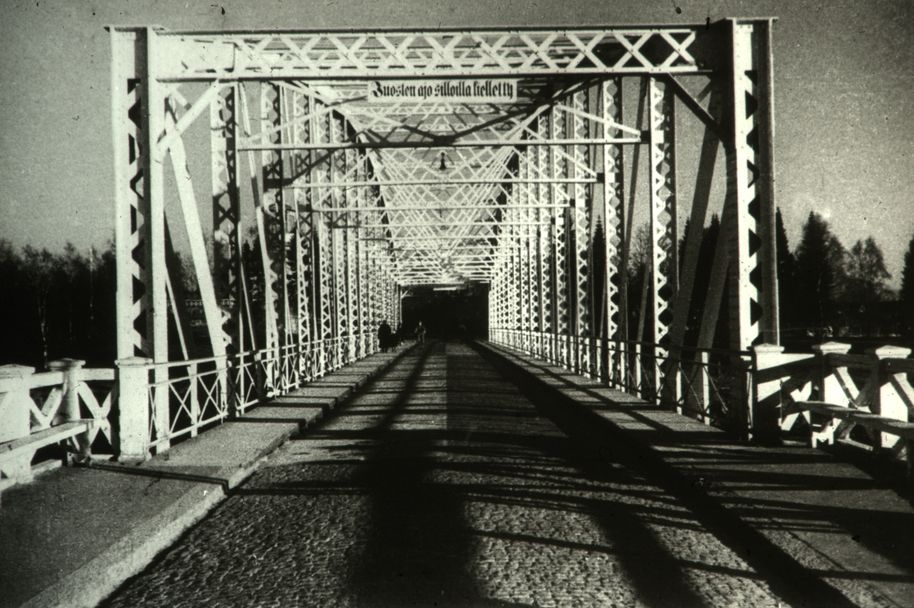
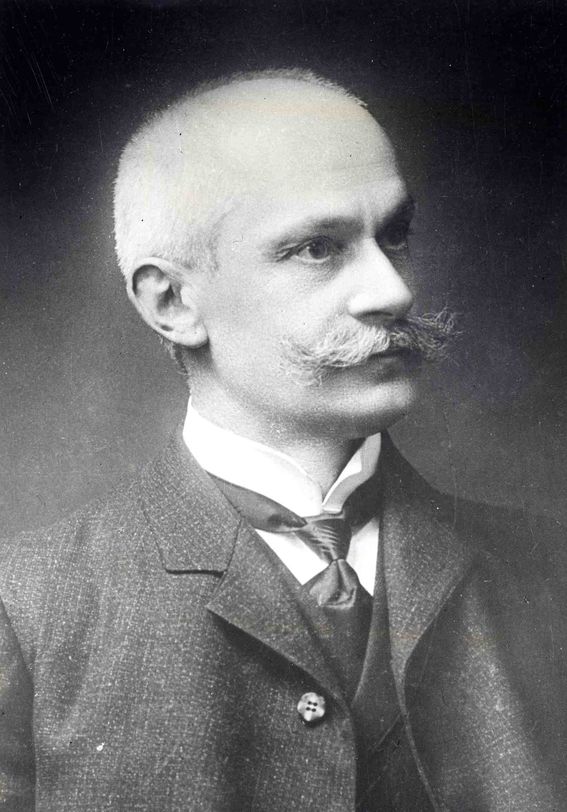
Lekve was succeeded by a Slovenian Mikael Strukel, who started at the Polytechnic Institute as a second teacher of civil engineering alongside Lekve in 1879 and, after Lekve's death, served as senior teacher of civil engineering from 1884 to 1913. Strukel had attended the Vienna University of Technology from 1869 to 1874. He strengthened the theoretical teaching of structural statics and the knowledge of strength calculations for bridges in Finland. Like Lekve, his teaching was based on general engineering, although the role of structural engineering was slightly more prominent in his teaching. Strukel's teaching was not very theoretical, except in bridge construction, but his lecturing style was appreciated as precise and illustrative.
When Strukel became a teacher in 1879, bridge, road and hydraulic engineering was taught 13 hours a week in the 4th year. In 1908, when the Polytechnic Institute became the Technical University of Finland, he became Finland's first professor of bridge construction and statics of structural engineering. Strukel retired in 1913 but served as the school's librarian until his death in 1923.
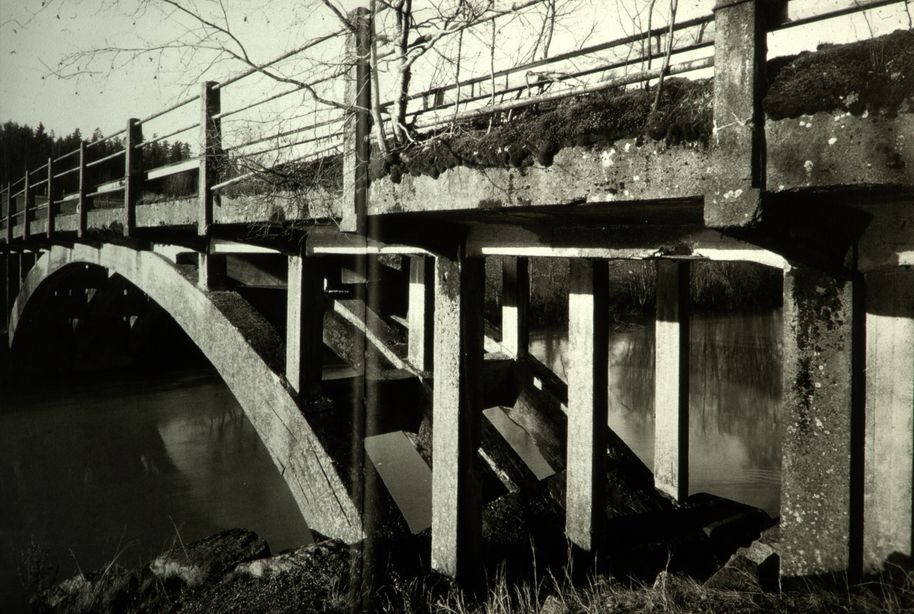
Jalmar Castrén succeeded Strukel as professor of bridge building between 1916 and 1923, and had a long history at the Technical University of Finland, having started as a teacher in the engineering department as early as 1901. The Finnish-speaking Castrén was appointed professor in 1916 after a lengthy discussion, as a language dispute over the role of Finnish and Swedish in the teaching of the Technical University of Finland delayed the appointment.
Before becoming a professor, Castrén had studied at the Berlin Institute of Technology and had made numerous study trips. He had then also worked as a bridge designer on railway buildings and played a major role in bringing reinforced concrete construction to Finland. The importance and appreciation of reinforced concrete construction rose greatly during his time, and he emphasized these structures in his teaching alongside graphic statics. The use of reinforced concrete allowed large spans, which made it particularly useful for bridge construction. Castrén's own designs include the Tönnö’s bridge in Orimattila, one of the first bridges in Finland built in reinforced concrete. In 1923 he was appointed Director of the State Railways, which ended his academic career.
Herman Ossian Hannelius continued Castrén's work as professor of bridge building and building statics. He had begun teaching at the Technical University of Finland as a lecturer in graphic statics and the encyclopedia of engineering in 1917. Before this he had worked in the bridge building and carpentry offices of the Railways Administration. Hannelius' 1918 doctoral thesis “Tvådelade vertikalfackverk. Bidrag till bestämmande av grund- och sekundärspänningar samt elastiska formförändringar” was the first dissertation to focus on bridge construction and at the same time he became the first doctoral graduate from the engineering department in 1921. Hannelius emphasized in his teaching wooden bridges, concrete arch and arch bridges, lattice, and plate girders. Hannelius' doctoral thesis is available at the Aalto University Learning Centre.
As a long-serving professor from 1924 to 1956 and the head of department from 1928 to 1956, he became the "father figure" of the engineering department and was an active participant in the guild's evening activities. His esteem is reflected in the fact that the Guild of Civil Engineers has named its annual ball after Hannelius as Hermanninsitsit. During Hannelius' professorship in the 1920s and 30s, most of the diploma theses at the Technical University of Finland were in the fields of bridge building, railway construction and hydraulic engineering.
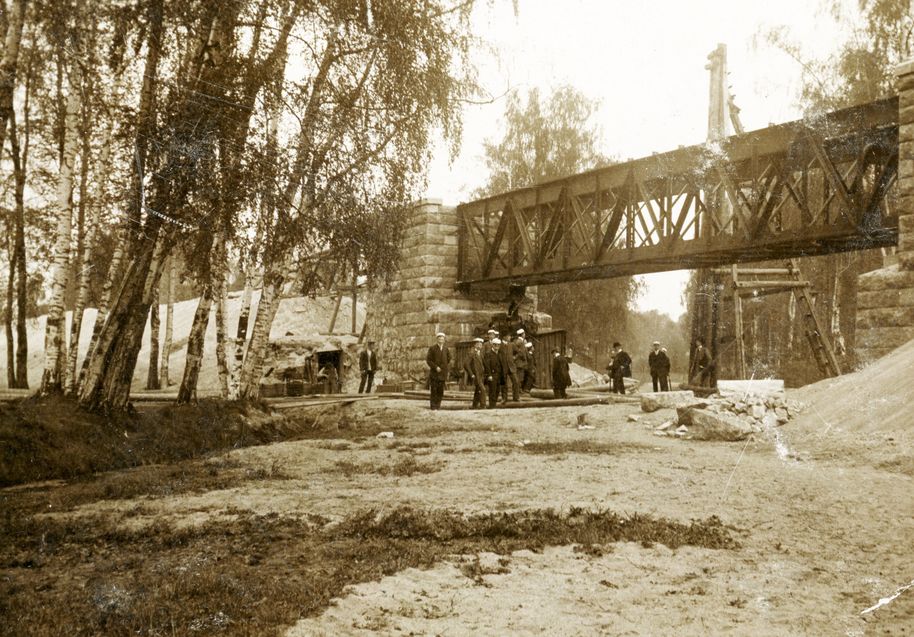
Societal changes
During Hannelius’ professorship, society and, with it, bridge-building underwent major changes. In 1921, the construction and maintenance of roads and bridges was made the responsibility of the state under the new Roads Act and more than 4,000 bridges were built in the 1920s and 1930s, reflecting the increased role of the state in promoting bridge building. The development of the railways had already forced the development of durable railway bridges, but the development of motor traffic and the increase in the number of cars placed new demands on other bridges, since in the former horse-drawn era bridges didn’t have to withstand particularly high stresses. During the time between gaining independence and the Winter war, the Ministry of Transport took up most of the state budget, as infrastructure improvements were seen important for the young state for both economic and defense reasons.
As road and bridge building became the responsibility of trained professionals, the new Roads Act made it possible to take account of technological developments. Towards the 1910s, steel and reinforced concrete gradually replaced wood and stone as the most common building materials, with concrete overtaking wood as the most widely used bridge building material in 1926. After the Continuation war, wood experienced a new boom in bridge building, as rationing made it difficult to obtain other building materials. Wooden bridges were intended to be temporary and were replaced as far as possible in the 1950s and 1960s as permanent bridges.
Hannelius' lecture notes from the Bridge Building I and III courses in 1945 and 1947 and Bertel Hellman's lecture notes from the turn of the 1920s and 1930s provide a glimpse into the teaching of bridge building at the Technical University of Finland (after 1942 Helsinki University of Technology, HUT). The illustrations show the main forms of suspension bridges in both Hannelius' lecture notes and Hellman's notes:
Towards Otaniemi
Throughout its existence, the number of HUT students had been growing. In the 1940s, the number of HUT students doubled and the need for new premises became more pressing. It was decided to build the new campus in the Otaniemi area and construction began in the early 1950s. In 1959, the Department of Civil Engineering completed its own building in Otaniemi, which also contributed to the teaching of bridge construction.
Bruno Kivisalo, who taught bridge engineering from 1956 to 1969, was no longer professor of structural engineering, but only Professor of Bridge Engineering. This change was made possible by the development of reinforced concrete structures, as structural science and strength of materials became more relevant to the teaching of architecture than to the teaching of bridges. Under Kivisalo’s leadership, the emphasis of teaching was on steel bridges and on engineering principles. In 1962, a new curriculum was introduced in the Civil Engineering Department, which, at the beginning of the third year, was divided into four tracks, one of which was house and bridge construction. In 1971, the curriculum was restructured so that there were no longer separate lines of study, but rather clear majors and minors.
Heimo Paavola (Professor of Bridge Engineering in 1970-1984), who previously headed the Laboratory of Bridge Design and Statics at VTT, and Aarne Jutila (Professor in 1984-2008) continued the work of their predecessors. During Paavola's time emphasis was placed on methods of bridge analysis and on manufacturing and installation techniques. Jutila continued along the same lines as Paavola, emphasizing the importance of connector technology and the aesthetic values of bridges. Paavola and Jutila, together with Pentti Loikkanen, wrote the book "The Basics of Bridge Engineering", which was written to alleviate the shortage of textbooks on bridge engineering, as there was a lack of literature available in Finnish about bridge engineering. The book can be found in the Aalto University Learning Centre.
This video clip from 1986 shows architecture students testing bridge designs. Students that designed the bridge have to go under and over it, testing load carrying capacity:
Bridge building was taught together with road, railway, and hydraulic engineering already in the days of the Polytechnic Institute (1879-1908) during the 3rd and 4th year for a total of 30 hours per week. According to later study guides, bridge building was also taught to 3rd and 4th year students before 1971, when the separate subjects were replaced by majors and minors. Bridge engineering is still part of the curriculum at Aalto University's Department of Civil Engineering.
Writer: Tuukka Korhonen
Sources:
On the Finna website you can find images from the History of Architecture course, including many photographs of bridges. Architectural drawings of bridges can also be found among the teaching material used, dating back to the early 19th century. A particularly large number of theses on bridge construction were also written in the 1920s and 1930s. The Aalto University Learning Centre has books on bridge building based on the material used in teaching and written by professors of bridge building. Some video material is also available, including a selection of bridge tests for architecture students, in which wooden bridge models must withstand the weight of their builders. The lecture notes of Bertel Hellman and Lauri Hokkanen from the turn of the 1920s and 1930s also provide information on the teaching of bridge building.
- Published:
- Updated:
